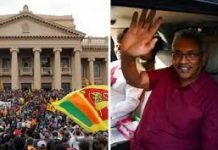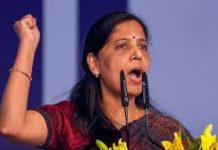A major boost for the BJP ahead of the crucial state battles as it secures an incredible victory in Haryana, while the NC-Cong combine sweeps the J-K polls. A report by Aayush Goel
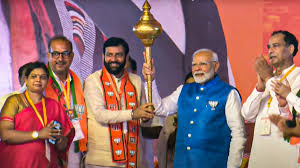
In a remarkable turn of events, the BJP has achieved a record-breaking victory in Haryana, overturning predictions of defeat that had been widely circulated in the lead-up to the elections. This unexpected win may shift momentum back in the BJP’s favour as it gears up for a series of critical state battles ahead. The results send a clear message: Prime Minister Narendra Modi continues to wield significant influence, while doubts remain regarding the efficacy of Leader of Opposition Rahul Gandhi’s campaign strategy. The Congress party, in the aftermath of this election, appears to be reeling from the shock of the BJP’s triumph.
The question now arises: was this victory a product of Home Minister Amit Shah’s strategic brilliance, the recent change in Chief Minister, or effective groundwork by the RSS? Each of these factors could be seen as pivotal in this outcome. Moreover, the behind-the-scenes support from Gurmeet Ram Rahim’s Dera Sacha Sauda, along with infighting within Congress and the party’s over-reliance on former CM Bhupinder Singh Hooda, will surely fuel animated discussions in the coming days.
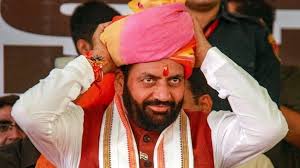
As the BJP celebrated its historical success in Haryana, top party strategists attributed the win to three critical factors: a relentless Prime Minister, a humble Chief Minister, and a well-organized grassroots mobilization effort. PM Modi’s ability to set aside personal equations with Haryana CM Manohar Lal Khattar was instrumental in overcoming a decade-long anti-incumbency narrative. This strategy has yielded massive successes for the BJP in other states, including Gujarat, Uttarakhand, and Tripura.
In a strategic move, the BJP appointed Kurukshetra MP Nayab Singh Saini, an OBC leader, to replace Khattar in March 2024. Saini was tasked with countering Congress’ narrative that the party was losing touch with key demographics, particularly the “jawan-pehelwan-kisan” groups. Under his leadership, significant welfare initiatives were rolled out, including reservations for Agniveers, lifting the ban on non-basmati white rice exports, and promising Rs 2,100 monthly support for women. Saini’s rapid progress in addressing these issues resonated well with the electorate.

On the eve of the elections, the BJP took a bold step by replacing 38% of its sitting MLAs. This contrast with Congress, which retained most of its incumbents and subsequently suffered losses, speaks volumes about the BJP’s strategic adaptability. The party effectively reached out to both Jat and non-Jat communities, successfully penetrating traditionally strong Jat regions. In Tosham, for example, the BJP fielded Shruti Choudhry, the daughter of former Congress leader Kiran Choudhry. After switching parties due to Congress denying her a Lok Sabha nomination, Shruti won decisively, as did BJP candidates in other Jat-dominated areas like Bhiwani and Sonepat.
In contrast, the National Conference-Congress alliance in Jammu and Kashmir marked a historic resurgence, securing a majority in the first assembly elections after the revocation of Article 370. The NC won 42 seats, sweeping the Kashmir region, while the BJP maintained its dominance in Jammu with 29 seats. These elections, held over three phases, were the first in a decade, further amplifying their significance.
Among the notable winners in Kashmir were NC vice-president Omar Abdullah and Congress UT chief Tariq Karra. In contrast, prominent figures like Mehbooba Mufti’s daughter, Iltija Mufti, and former Deputy Chief Minister Muzaffar Baig faced defeats, highlighting the shifting political landscape. The BJP’s J&K chief, Ravinder Raina, also lost in Nowshera, complicating the party’s standing in the region.
As political analysts and journalists dissect these developments, Tehelka’s cover story features in-depth reports from Srinagar by Special Correspondent Riyaz Wani, alongside contributions from Rajesh Moudgil, Pawan Kumar Bansal, and Ayush Goel, who extensively covered the Haryana elections, as well as a column by esteemed journalist Kumkum Chadha.
BJP gets the battle template -‘Haryana Hurricane.’ This is how the BJP describes the recently concluded assembly elections in the state where the party defied all exit polls and political experts by winning for the third consecutive time. The victory is significant as the party that had to go for coalition in 2019 polls managed to secure a simple majority, by winning 48 seats in the 90-member Assembly.
The victory has not only handed the reins of state government to the party but the miraculous ‘hat-trick of assembly wins’ has also infused the lost ‘Josh’ after the party agonizingly fell short of the majority mark in the Lok Sabha elections in June. Needless to say, the poll outcomes have rejuvenated the party cadre everywhere. The news was especially heartwarming for them as Haryana was one of the states where the party’s Lok Sabha tally had been halved, down from 10 in 2019 to five this year. The victory has given the party a ready template for forthcoming assembly elections in Maharashtra and Jharkhand in November.
Maharashtra has a political scenario similar to Haryana where the party had failed to weave its magic in the Lok Sabha elections. The party and its allies won just 17 of the state’s 48 parliamentary seats with an antagonistic Maratha community, factionalism and mounting anger against deputy CM Devendra Fadnavis all working against the ruling Mahayuti alliance. The next is Jharkhand, where the situation is relatively better, with the NDA winning nine of the state’s 14 LS seats. But here again, the BJP will have to work hard to regain the affections of the angry tribal communities while also reining in the massive factionalism.
“We have sailed through Haryana and are more confident, encouraged and enthusiastic. Will win both Maharashtra and Jharkhand empowered by our victory in Haryana and performance in Jammu and Kashmir,” said National BJP President Union Health Minister JP Nadda.
The importance of RSS – The Sangh, which has been the backbone of the party, found itself fighting relevance crises in May this year. It was in the middle of the Lok Sabha election, when BJP president J. P. Nadda grabbed headlines by saying the party is now saksham (capable), and no longer needs its ideological mentor Rashtriya Swayamsevak Sangh (RSS) to campaign for it. The result of that election, which the RSS cadres largely sat out, gave the party a reality check and it was back to basics in Haryana. Battling strong anti-incumbency in the state, the BJP turned to Sangh who got on the ground and held hands right from the ground surveys to ticket allocation and campaign, and helped in achieving the impossible by getting the party a record third-time successive victory in the state.
The BJP clearly learnt its lessons and the top brass sought the RSS’s help again to rebuild trust with the voters. The mentor stepped up and left no stone unturned to campaign for the BJP in Haryana. Regular samiksha baithaks (meetings between members of the two organisations), door-to-door campaigning by RSS volunteers, efficient distribution of voter slips in every household, regular communication of feedback from the ground by karyakartas to the BJP, and even giving greater inputs on which national leader should campaign in which constituency, the RSS has had a significant say in the BJP campaign.
The Sangh units who consolidated the core cadre voters and helped the party in reversing the anti-incumbency trend to pro-incumbency have credited the success to better coordination with the party, all thanks to the Sangh’s ‘Chanakya’ — joint general secretary 60-year-old Arun Kumar. Kumar’s RSS colleagues, Atul Limaye and Alok Kumar have been asked to do the same in Maharashtra and Jharkhand, respectively.
Amidst various aspects of Haryana poll victory is how things turned around for former state CM and now Union Power Minister M.L. Khattar. The BJP, going for its tried and tested winning formula, switched CM in the state right ahead of Lok Sabha elections. The move was aimed at countering anti-incumbency in the state with the then CM, ML Khattar emerging as the face of this anti-incumbency.
Taking brick-bats and being sidelined during the Haryana poll campaign, especially during the rallies of his mentor and PM Modi, apparently to buck anti-incumbency, Khattar, a former RSS Pracharak and CM of around a decade, proved to be the poster boy of the thunderous victory.
Khattar was instrumental in the BJP’s massive OBC outreach of initiating the proposal to increase the income ceiling for the OBCs. After the Central Government notified the decision, Saini announced its implementation in June. According to political experts, it was the OBC community’s support that helped the party score over the Congress which failed terribly in giving its OBC leaders their due in elections.
The Khattar factor has got the BJP now looking for similar faces in both Maharashtra and Jharkhand. The party is now switching its campaign tone to celebrate the works of their Mahayuti coalition. The Mahayuti government has announced initiatives worth Rs 8,440 crore. These include welfare programs like free LPG cylinders and agricultural schemes. In Jharkhand, the party aims to bank on its tribal outreach. It expects Haryana’s OBC magic to be replicated by Jharkhand’s tribals. After appointing a tribal leader to head its first government in Odisha, the BJP has announced plans to establish a grand memorial in Sundargarh district to honor tribal icon and freedom fighter Birsa Munda, in celebration of his birth anniversary. The party is looking for Khattar-like RSS-backed faces to make poster boys of the campaign.
The battles ahead – Other than the two key points mentioned, there are many micro notes that BJP can take for the Maharashtra and Jharkhand elections. The party’s failure in the sole Muslim-dominated district Nuh and setbacks in J&K have pointers on how the BJP must engage with the Muslim community which will be vital for elections in Maharashtra though the community is much bigger and state politics is more complex.
The BJP leaders feel that learning from Haryana has equipped them better to deal with aggressive allies there. The ruling Mahayuti alliance comprises the BJP, Maharashtra CM Eknath Shinde-led Shiv Sena, and his deputy and Nationalist Congress Party (NCP)-Ajit Pawar faction. Both allies were eyeing more seats in the belief that the LS results had diminished the BJP, but the Haryana comeback has put the saffron party back in the game.
Maharashtra and Jharkhand are preparing for important elections. In Maharashtra, the Assembly elections are set for November 2024. The coalition is up against Maha Vikas Aghadi, a coalition of Congress, NCP (Sharadchandra Pawar), Uddhav Thackeray’s SHS (UBT) (then Shiv Sena) Samajwadi Party, CPI(M), and others. The RSS having proven its mettle in the North is now highly mobilized in Maharashtra with prominence being given to leaders like Pankaja Munde, Vinod Tawade, Sudhir Mungantiwar, and Chandrakant Patil. Even Union Minister Nitin Gadkari is apparently in the loop in the plans for the assembly polls.
In the LS election, the reservation issue had polarised the Dalits, Tribals and Marathas and hurt the BJP, especially in regions like Marathwada. Like the experiment in Haryana, where it gained non-Jat support, in Maharashtra, the BJP has revived its ‘Madhav formula’ (Malis, Dhangars and Vanjaris), the powerful OBC groups, which it has been cultivating to challenge the political hegemony of the dominant Marathas.
While Jharkhand is conventionally a BJP stronghold and banking on tribal outreach, it will face off against Jharkhand Mukti Morcha (JMM) chief and Chief Minister Hemant Soren, one of the country’s most prominent tribal leaders. The party’s state President Babulal Marandi has given the ambitious election slogan “Kyon pade ho chakkar mein, Jharkhand mein koi nahin hai BJP ki takkar mein (Why worry, there is no one in Jharkhand who can challenge the BJP)”.
The party, depending on cadre voters, has of late been facing a major challenge: securing the Scheduled Tribe (ST) reserved constituencies, a weakness that cost them dearly in the 2019 assembly poll (it won only two of the 28 seats). With last-minute SC welfare initiatives giving a major boost to the party in Haryana, the BJP has already ramped up its outreach to STs through initiatives like Rs 79,000 crore national ‘Dharti Aaba Janjatiya Gram Utkarsh Abhiyan’, designed to benefit over 50 million tribals nationwide.
A food for thought – The Haryana election results indicate that the BJP can still effectively defeat Congress in direct contests, despite facing strong opposition.
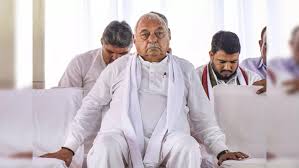
The Congress party had hoped to capitalise on anti-incumbency sentiments and internal divisions within the BJP in Haryana, but the results show that many voters remained loyal to the ruling party. The final Haryana assembly results came as a surprise for many. Congress leaders Rahul Gandhi, Mallikarjun Kharge and Bhupinder Hooda said the poll results were “unexpected” as “every exit poll and survey” showed that the Congress would win the polls. The loss in Haryana has also weakened the position of the Congress in the Maha Vikas Aghadi alliance, which will intensify the power struggle among the allies.
The Haryana results should make the Congress to introspect over dealing with allies of I.N.D.I.A block at the state level. The key ally, the AAP, has blamed the Congress, especially the leader of the opposition and former CM Bhupender Hooda for “overconfidence” for the “shocking” loss in the state. The Congress ally, the Shiv Sena (UBT) leader Sanjay Raut indicated that results “would have been different” had the Congress allied with INDIA bloc partners such as the AAP and the Samajwadi Party. It is worth noting that while the Congress was initially aiming for the lion’s share of seats in its alliance with Raut’s party, it will now be negotiating from a position of weakness in Maharashtra.
Similarly, in Jharkhand, the Congress, right after the Haryana elections, has announced all alliance partners stand united and are with the JMM-led coalition government in the state and seat sharing will be discussed only after elections are formally announced. The JMM is seeking the lion’s share after the Haryana poll debacle. Things have changed considerably even at the central level as just a day after the Haryana election results, the AAP announced that it would contest the Delhi assembly elections without an alliance with Congress. The infighting over seat sharing in upcoming assembly polls in Jharkhand and Maharashtra within the I.N.D.I.A block after the Haryana poll debacle appears to be handing BJP an advantage in both states.









